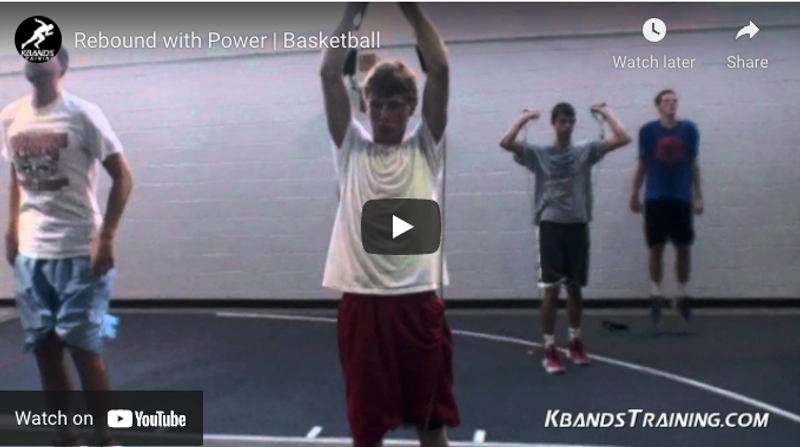Basketball Drills: Add Power to the Rebound
The basketballs drills presented by most coaches and professional trainers are divided into separate skill areas and also into targeted strength building exercises for different muscle groups around the body. Great basketball players need in-depth knowledge of game mechanics and pure skills, like defensive reflexes and hand-eye coordination. And they also need toning, tightening, strength-building, and explosivity in core areas like the arms, feet and ankles. A flawless lay-up shot requires hundreds of hours of actual practice and repetition, but it also requires many hours in the gym building power in the muscles that add height to the vertical jump.
One of the most important aspects of the game—the rebound-- forms a focus area for a wide variety of basketball drills. There are no great games without great rebounding, and a tight rebound requires explosive reflexes and strong core jumping skills.
What Exactly is Rebound?
The word rebound has two meanings—the technical term applies to the possession of the ball taken after a missed free throw, but for training purposes, a rebound is the speed with which the body recovers, recaptures potential energy, and prepares to jump immediately after touching down from the previous jump. Elastic rebound happens between one jump and the next and requires control, coordination, reflexes, and muscular power that aren’t engaged when the body jumps once and then stops.
Basketball drills focused on rebound can help basketball players make the most of the spilt second between landing and recovery. With better rebound control, basketball players can move faster, change direction quicker, respond better to changes on the court, and maintain height during consecutive vertical jumps. Without strong rebound, response time on the floor is slower and height decreases after the first vertical jump. Explosivity is lost and the game becomes weaker and clumsier.
Add Power to the Rebound
So what kinds of basketball drills can help add precision and force to the rebound? In the video, Trevor Theismann leads a clinic of young basketball players through a set of basketball drills designed to add power and elasticity to the muscles that contribute to rebounding.
Shoulder Press
Basketball drills that strengthen muscular power and control in the shoulders can help with all aspects of the game. In the first move of the video, the team is divided into two groups. The first group completes a set of shoulder presses using the KB Powerbands to add resistance. The basketball players stand on the bands at the center while holding a handle in each hand. Then they raise their arms over their heads, pulling the resistance bands up behind their backs.
As you watch the basketball players perform this drill, you can see how those who push the handles directly and consistently over their heads are generating pressure in the shoulders and triceps, the muscles that contribute to shooting, passing, rebounding and catching the basketball.
Notice how the level of resistance seems too light or too intense for some, and perfect for others. As basketball players perform this drill with the KB Powerbands, they should make sure they use a level of resistance that matches their capabilities.
Ankle Hops
While the first group works on resisted shoulder presses, the second group of basketball players completes a set of ankle hops. In the video, the basketball players are wearing Kbands resistance bands around their upper legs. Added resistance can help basketball players develop rebound strength and explosivity, though in this particular exercise, the hop should stay vertical and both legs should stay together, so the resistance supplied by the band won’t play a key role.
During the ankle hop, the basketball players stand straight with their feet together and execute a series of vertical jumps with no pause between each jump. They strive for maximum vertical height using their feet and legs only.
Notice how the basketball players who get the most out of the ankle hop exercise are those who keep their arms at their sides and don’t engage the momentum of the arms in the power and height of the jump. When the arms aren’t engaged, the legs and lower body supply the full power behind the liftoff and landing.
Also, note that basketball players who do the move correctly are not allowing their knees to absorb the impact of the jump. Instead of bending their knees and landing gently, they keep their knees straight (but not locked!) and concentrate the impact of the jump in their calves and ankles. This concentration of force will add strength to the lower leg and power to the stretch reflex that pushes the foot away from the ground in the final motion of the vertical jump.
As athletes complete these basketball drills and rebound exercises, they should think about where the energy is being distributed during the motion. If the ankle hop is executed correctly, the pressure and burn should be focused in the calf, ankle, hips and core. Too much pressure or impact in the quads, hamstrings, or knees means the knees are bending too much at the landing point.
Likewise, the pressure created by the shoulder press basketball drills should be felt in the shoulders, upper back and triceps, not the wrists and forearms. If the pressure feels incorrectly focused, basketball players should reexamine their body position.
Basketball Drills: Final Notes
To get the most out of basketball drills like these, strength-building exercises should be combined with exercises that sharpen reflexes and reaction times on the court. In addition to completing ankle hops and shoulder press exercises, basketball players should be encouraged to think about how these muscle groups are engaged during moves within the game. Combine shoulder presses with passing exercises, and combine ankle hops with shooting and recovery drills. Also, be sure to begin and end every resistance training session with proper warm-ups, dynamic stretches, and cool down exercises.

